VESTIGES OF EDO IN TSUKUDA
Behind-the-scenes of Tsukuda ni Nokoru Edo no Omokage (Vestiges of Edo in Tsukuda)
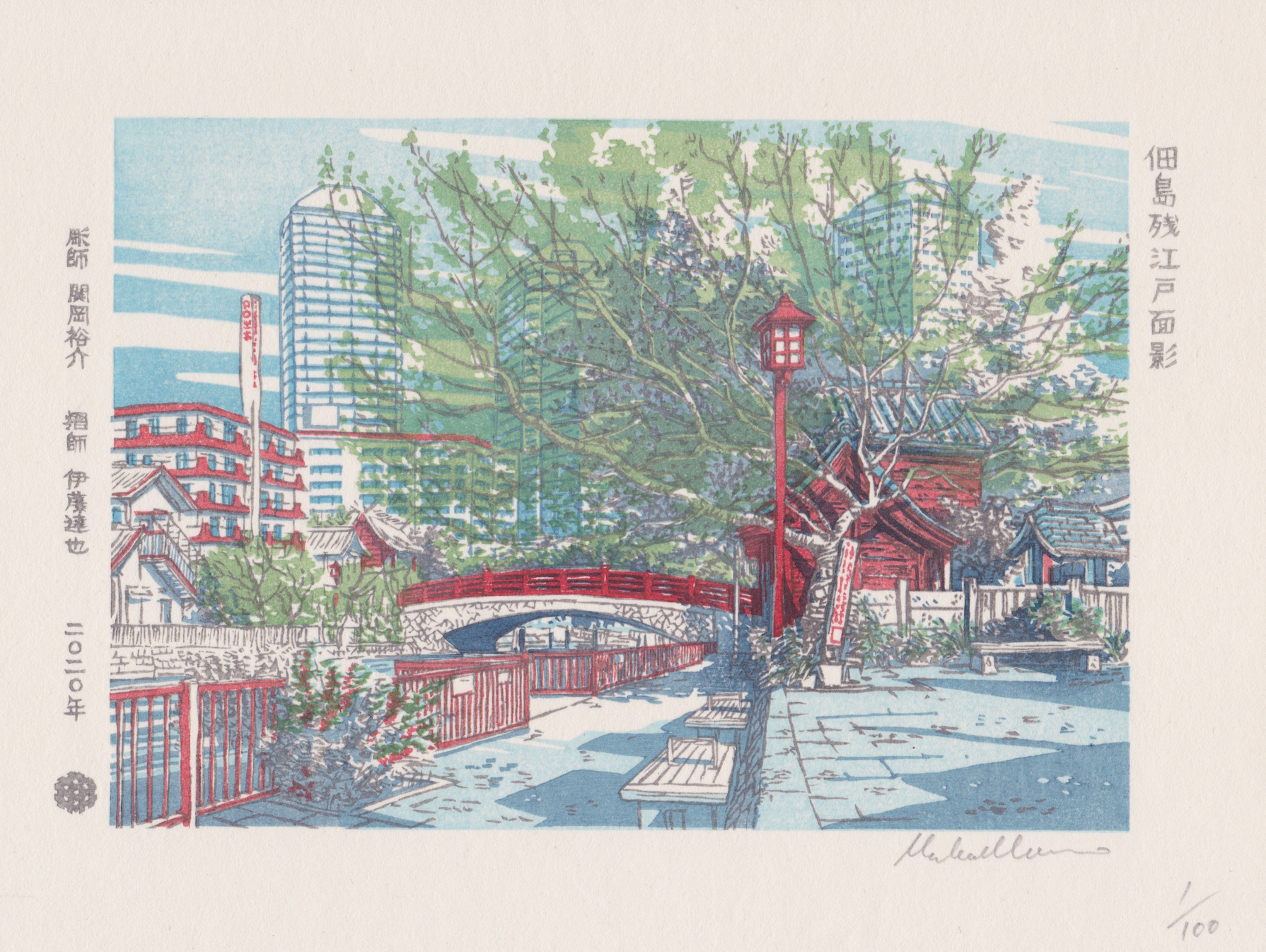
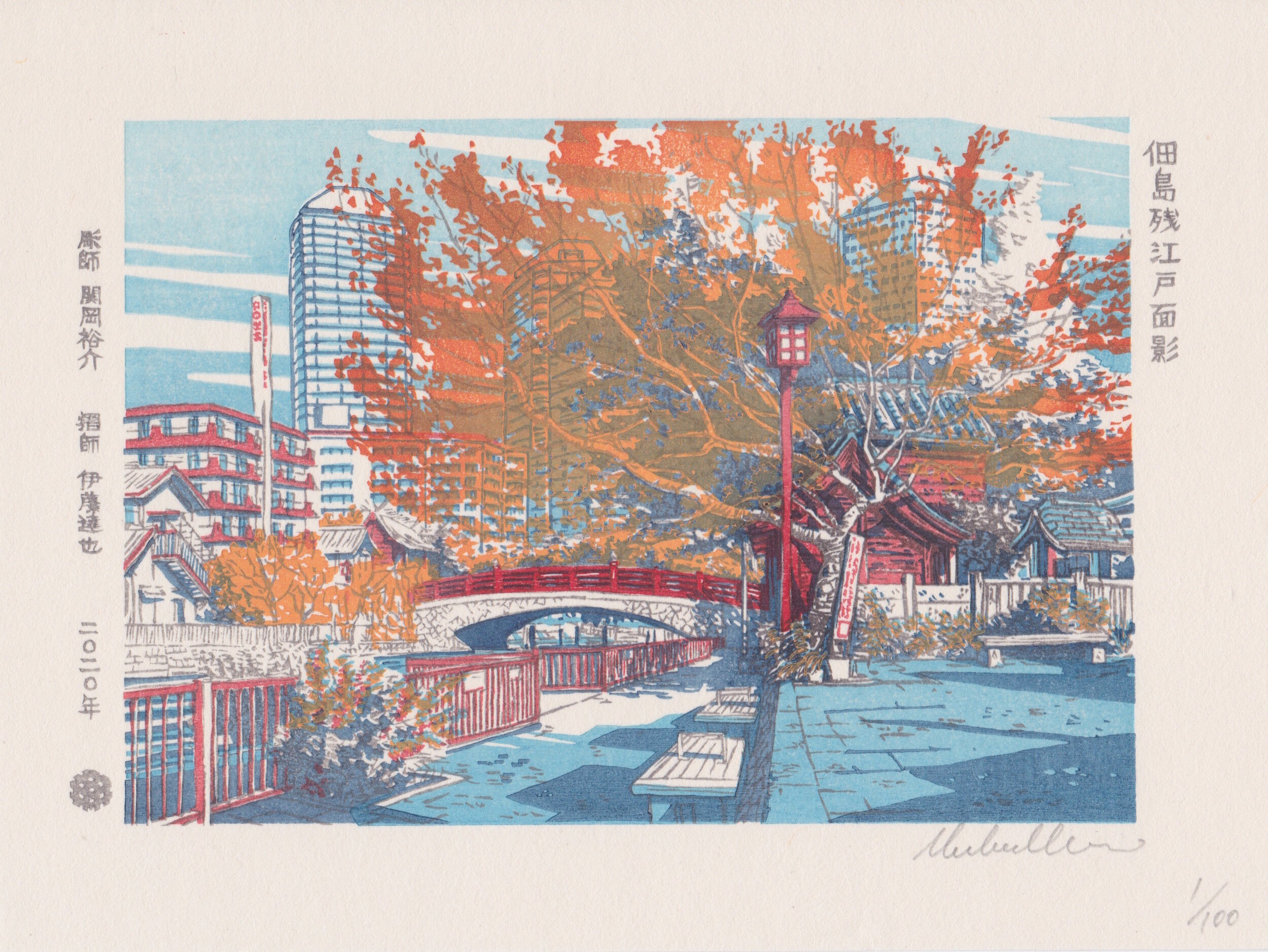
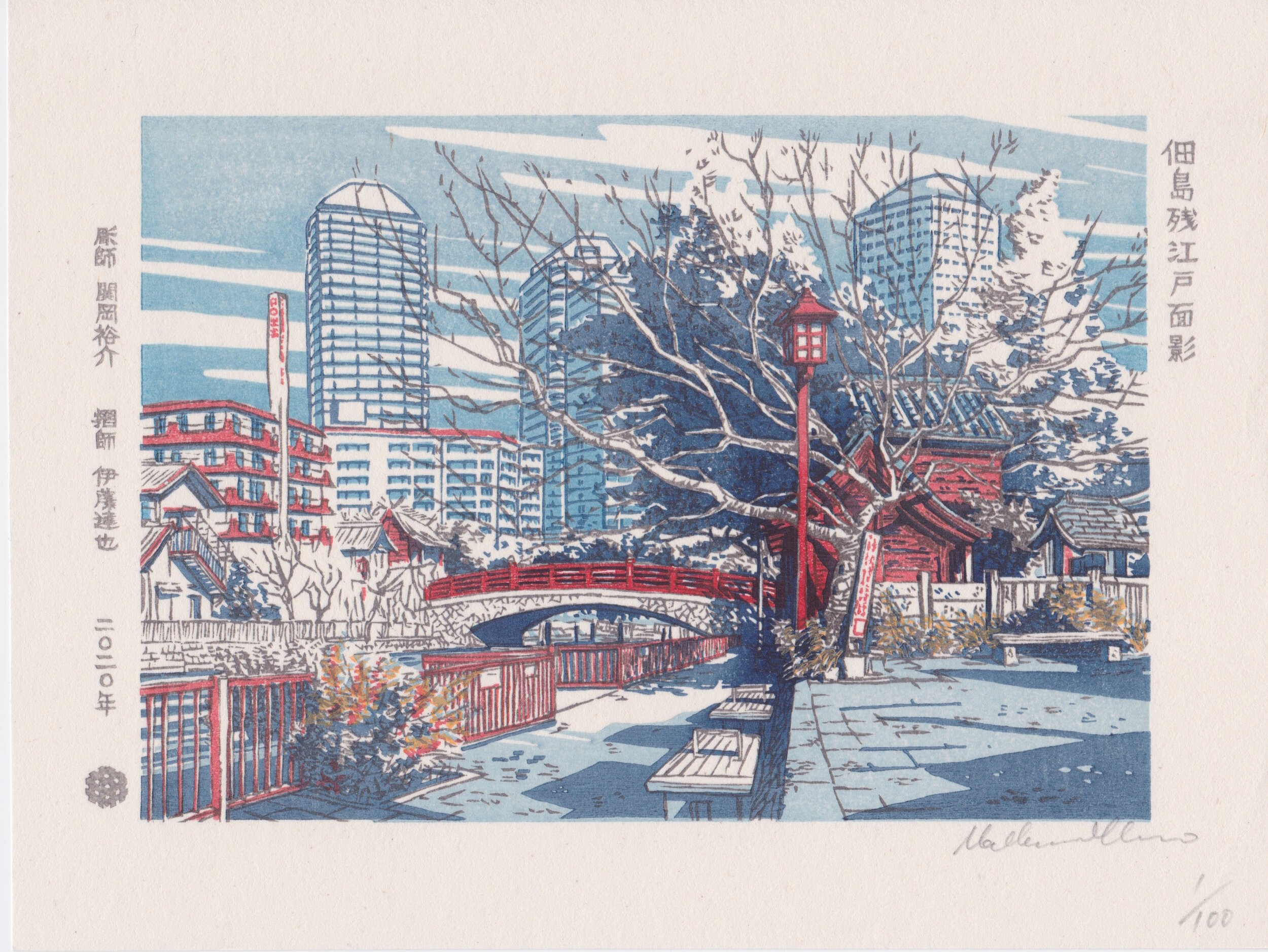
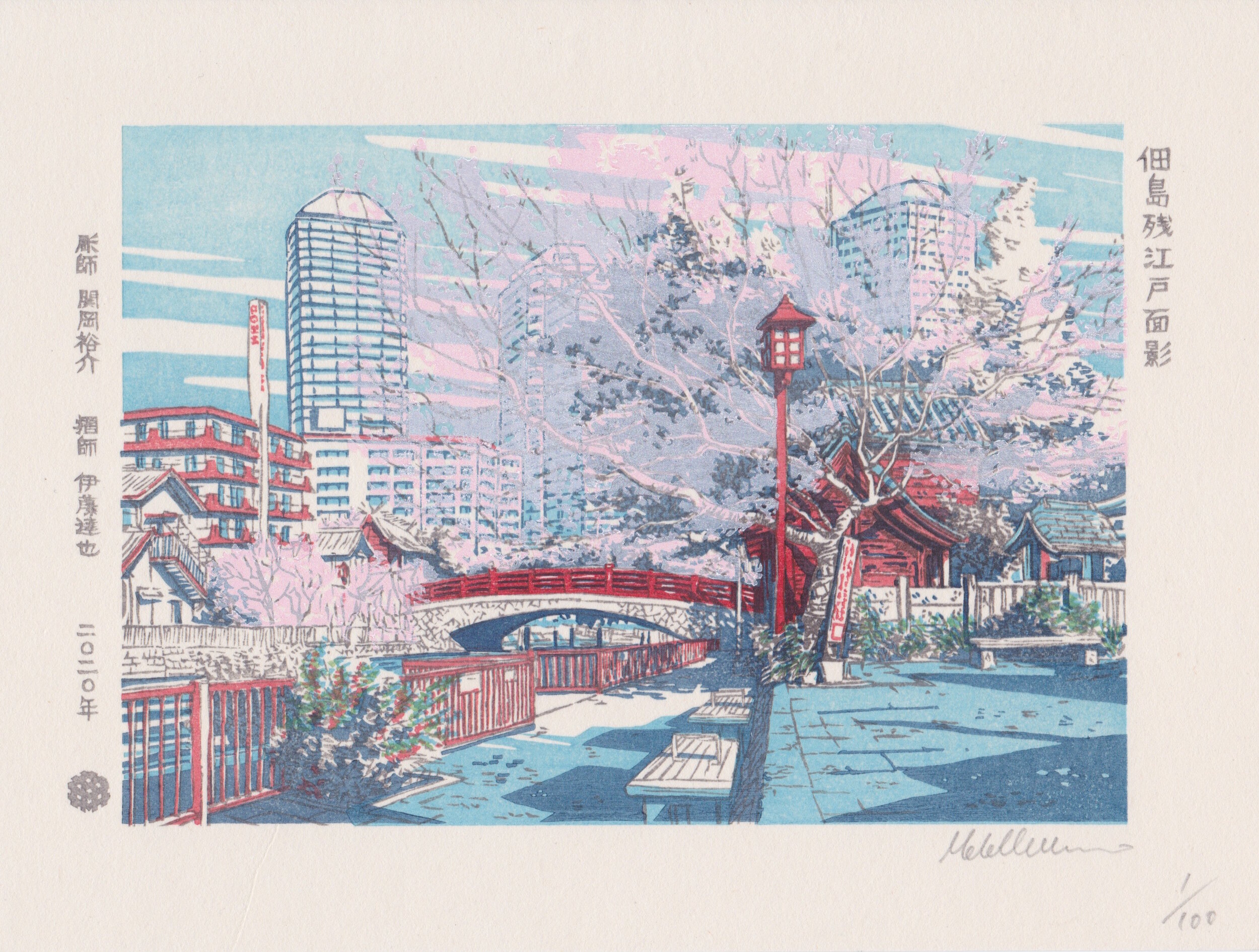
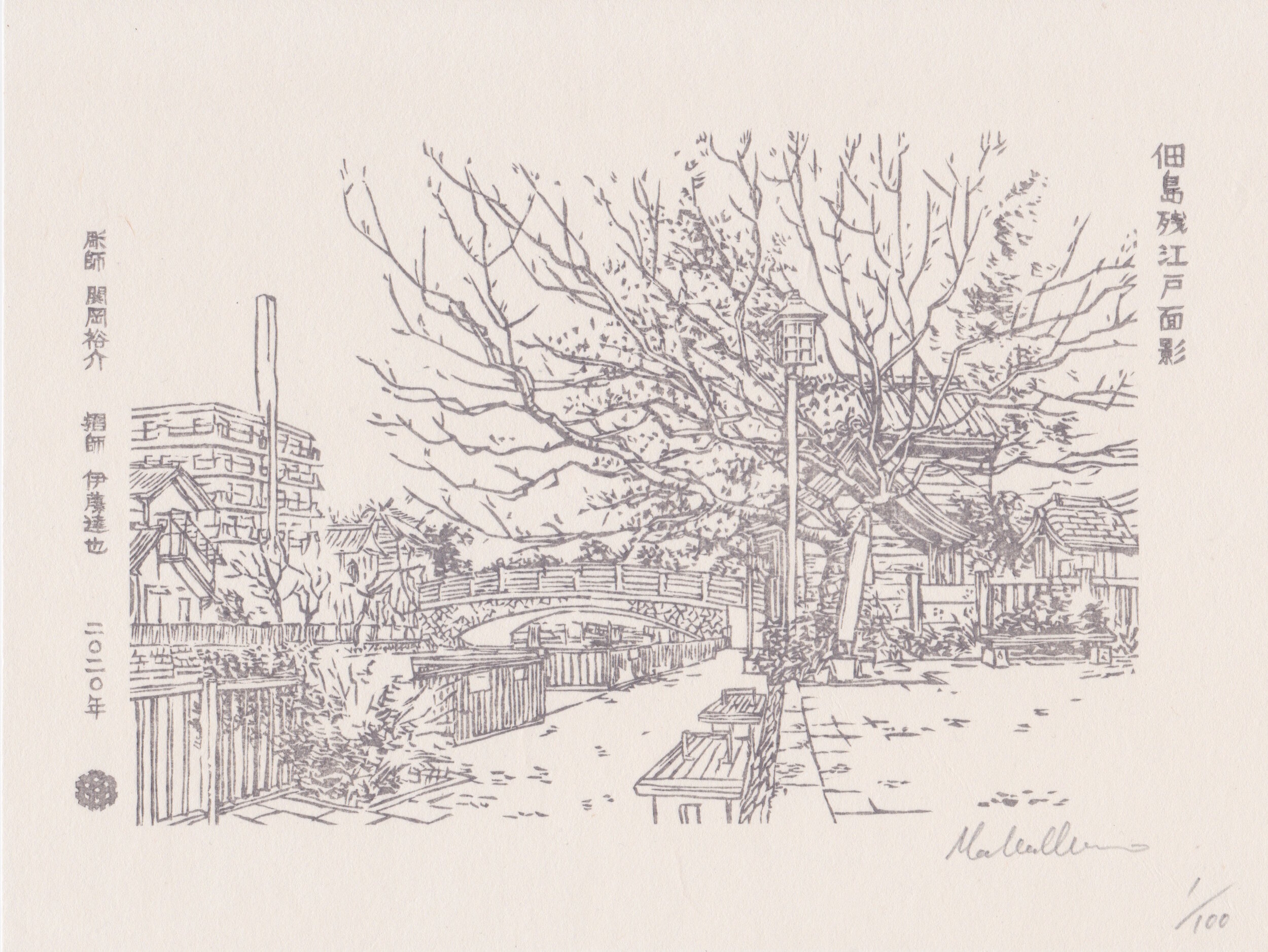
About Vestiges of Edo in Tsukuda (Tsukuda ni Nokoru Edo no Omokage)
Artist: URBANOWICZ Mateusz
Woodcarver: SEKIOKA Senrei III
Printer: ITO Tatsuya
Year: 2020
Our first original landscape ukiyo-e depicting Tsukuda, a neighborhood next to Tsukishima station in the east of Tokyo. This artwork highlights the striking contrast between the modern architecture and historical elements, that co-exist in harmony in Tsukuda today. The Japanese title Tsukuda ni Nokoru Edo no Omokage translates to “the vestiges of Edo in Tsukuda” - the word omokage (vestige) refers to the river, an aspect of old Edo that has continued to exist to this day, despite the fact that other things may have evolved or disappeared with time.
When we trace back the history of ukiyo-e, we can see that there have been many foreign ukiyo-e artists who created important shin-hanga works in the 20th century, such as Paul Jacoulet, Elizabeth Keith, and Noël Nouet. We decided to follow this path in history and welcome Polish artist Mateusz Urbanowicz as the illustrator for this new Tsukuda landscape.
Since ukiyo-e are woodblock prints, it is possible to achieve different colour schemes with a single set of woodblocks, by changing the colour of the inks. We used this unique procedure to create 5 versions, all derived from this set of woodblocks, to express the four seasons (spring, summer, autumn, and winter), as well as a version with the outline only.
Price*
Per piece: $500
Set of four seasons (limited to 30 sets): $1700
Outline: $300
*International shipping fees may apply.
Details
Edition: 100 per season and outline
Size: Chuban 7.28 x 9.52 inches (18.5 x 24.2 cm)
Paper: Echizen Kisuki Bousho
*Attention
- Each work is signed by the artist.
- Each work is accompanied by a Certificate of Authenticity.
- Once the edition has been fully printed, the same woodblocks will be re-used to hold printing workshops.
- Edition numbers will be chosen randomly.
- At UKIYO-E PROJECT every print is considered unique, aligned with the Edo period philosophy that each ukiyo-e is an “original” piece of work.
- They will be packaged and sent in a specially designed, paper folio.
- The artwork is sold unframed.
Illustrator: Urbanowicz Mateusz
Born in 1986 and raised in Silesia, Poland.
After completing a Computer Graphics course at the Polish Japanese Institute of Information Technology, Mateusz Urbanowicz moved to Kobe (Japan), with a Japanese government scholarship, to study animation and comics. He graduated with honors from Kobe Design University with a short animated movie called Right Places.
From 2013, Urbanowicz worked as a full-time background artist in the Comix Wave Films animation studio in Tokyo, taking part in the making of TV commercials, animated TV series (such as Space Dandy) and feature-length animated movies (Your Name).
He moved to a freelance artist career to focus on his original projects in 2017 and started working on the Tokyo Storefronts watercolor illustration album published in April 2018. He continues to make his own art (comics, illustrations, paintings, animations), and online content including YouTube videos, as well as taking part in bigger projects and doing commission work from time to time.
Comment:
“The sakura, a small shrine, and the bridge...
I love to walk around Tsukuda and like its atmosphere a lot, but this part is probably my favorite. It reminds me that Edo Tokyo was a lot about the water channels with some magnificent wooden bridges, and transporting things using boats. It's a shame that we can't see these any longer, but places like this make me feel and imagine the past a bit. Also, I like that there is a public bath in the back left of this scene too! The contrast it makes with the modern high-rise apartments in the background is very enjoyable.”
Woodcarver: Sekioka Senrei III
Born and raised in Tokyo, lives in Arakawa-ku.
Although Sekioka was born into a family of printers, he starts training to become a woodcarver with the master Okura Hanbei at the age of 19, following the advice of his father Senrei II. After 7 years of training, on October 2013, he succeeds the name Sekioka Senrei III.
Sekioka has now been carving for over 40 years. As one of the highest skilled woodcarvers in the world, he is known to not only carve perfectly along the lines but also to realize the artist’s brushstrokes to keep the final outcome as close as possible to the the original illustration. Besides working on classic ukiyo-e, he challenges himself to take on modern designs as well, and actively accepts disciples with the desire to pass on this ancient Japanese craftsmanship to future generations.
Printer: Ito Tatsuya
Born in Tokyo, lives in Nezu.
At the age of 20, Ito succeeds Ito Tomorou IV, and works under the master Ogawa Fumihiko for 3 years. In 1995, he receives the Tokyo Meister award.
Since, Ito has held live printing demonstrations and workshops in museums and cultural institutions, not only in Japan but also internationally, such as in Austria, Hungary, France, Australia, and Washington D.C.
Washi Craftsman: Yamaguchi Kazuo
Yamaguchi starts his career as a washi craftsman in 1947, and is certified as Echizen washi master craftsman by the Japan Traditional Crafts Industry Promotion Association in 1981.
He specializes in the production of Echizen Kisuki Bousho - a kind of washi that has been used to print ukiyo-e since the Edo period. Yamaguchi's handcrafted paper is strong yet supple, and is highly sought after by ukiyo-e publishers.
Illustrate
The creation process of an ukiyo-e is a teamwork between three artisans: the illustrator, the woodcarver, and the printer.
The illustrator draws a draft that will serve as the basis of the ukiyo-e.
Carve
Once the woodcarver receives the draft, he starts by carving the omohan, the key woodblock to print the outline of the picture, and then the irohan, which are woodblocks for printing colors.
The set of woodblocks are then handed to the printer, who starts by printing the black outline with the omohan, and continues printing the colors by layering on top of the outline.
Sequence Prints
Please click on the right arrow to view the printing process.

















